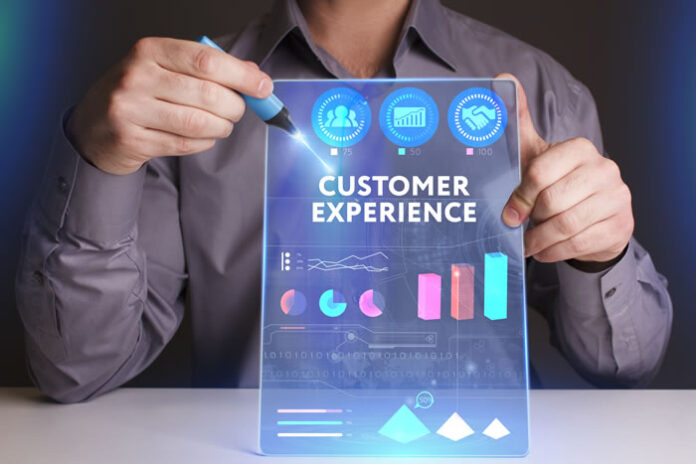I have a colleague who was refinancing his house a couple months ago. He was working with one of the top five U.S. banks that he’s been banking with for his entire adult life. The mortgage branch of the bank required him to send documentation confirming that he was a customer of the bank. After decades of being a loyal customer, being asked to prove that you’ve been a loyal customer is frustrating enough to go bank elsewhere. In order to change the status quo, we need to look how the future is connected.
If you define customer experience (CX) and employee experience (EX) as two distinct entities, you may think that the “mobile form downloads” that were available to my colleague was a great customer experience because he didn’t have to go into the branch to submit the documents. And from the employee perspective maybe the mortgage department provided employees with documentation to quickly resolve conflicts for customers who are refinancing. So that’s solid CX and EX, right?
The truth is, if you’re not connecting these two experiences, you’re creating unnecessary hurdles for employees and frustrating customers to the point of jumping ship. It’s time to rethink CX and EX—the future is connected experiences.
Zoom Out to See the Compounding Value of Connected Experiences
A recent Forrester report found that companies are struggling to connect EX and CX, but those that do report greater revenue, operational efficiency, and customer satisfaction. The report echoes what we see with our own customers: using data from one experience to feed the other compounds the value of insights as they flow through the organization. This drives revenue, productivity, and customer satisfaction.
In the case of my colleague, a connected experience meant that the mortgage branch would have recognized him as a loyal, long-term client and saved an employee a frustrated customer call.
What Is a Connected Experience?
Connected experiences provide customers with relevant product recommendations, support agents with relevant solutions, and employees with the bigger picture to make strategic decisions. The experiences are tailored to the user’s context and intent and occur across every channel. Most importantly, all of these experiences operate in a single system that uses machine learning to generate insights and apply those insights for each audience.
Building this connective tissue is easier said than done. That same Forrester report found only 44% of those surveyed strongly agree that they can provide personalized experiences across channels. And a mere 33% would say those experiences are relevant and connected.
Let’s take the retail industry for example—consider the relationship between the digital merchandiser and the customer. The merchandiser has to ask a data scientist to figure out what’s trending in customer queries, add-to-carts, and conversions. Once they have the answer, they then go to IT to get an engineer to update the website and pin popular products so customers can find them easily. Insights from customers inform merchandisers who can then curate a more relevant experience. However, the back and forth of multiple parties creates barriers and lag time between employees and customers. Thus the need for the future is connected experiences.
Data travels much faster than people. A connected experience means that merchandisers can have real-time customer insights available in a way that they could readily understand, and they could immediately upgrade the customer experience in response. Employees win because they’re making educated choices based on customer signals without having to wait for the back and forth of multiple teams. Customers win because they enjoy a personalized omnichannel experience that keeps them coming back.
A rising tide lifts all boats – better CX feeds better EX, which feeds better CX, and so on.
Use Case: Lenovo Creates Connected Experiences During Covid-19
Over the course of Covid-19, our customer Lenovo saw purchase patterns vary by micro-regions, and the patterns shifted rapidly in response to the news story of the hour. Individuals were making the types of purchases ordinarily made by businesses to supply their work-from-home office, meaning certain products were in high demand while others sat on the shelf. To complicate things further, these behavior changes were not consistent across the globe, or even across one country. Simply put, their focus was on the future is connected outcomes.
By relying on machine learning algorithms over the always-slightly-delayed human process of gathering data, studying and extracting behavior patterns, and then applying search rules, Lenovo was able to connect customers and employees, quickly pivoting to meet customers’ changing needs and eliminating employee guesswork. Covid-19 revealed challenges in unpredictable spikes in demand, and those who are slow to respond suffer the consequences, including losing customers to more agile competitors.
Connect the Dots and Build a Stronger Ecosystem
Given the unprecedented times we’re in right now, it’s more challenging than ever to anticipate customer and employee needs and meet them where they are. Break down the barriers between CX and EX to drive the digital transformation your organization needs to succeed in the long-term. It’s time for the future is connected experiences to thrive.















